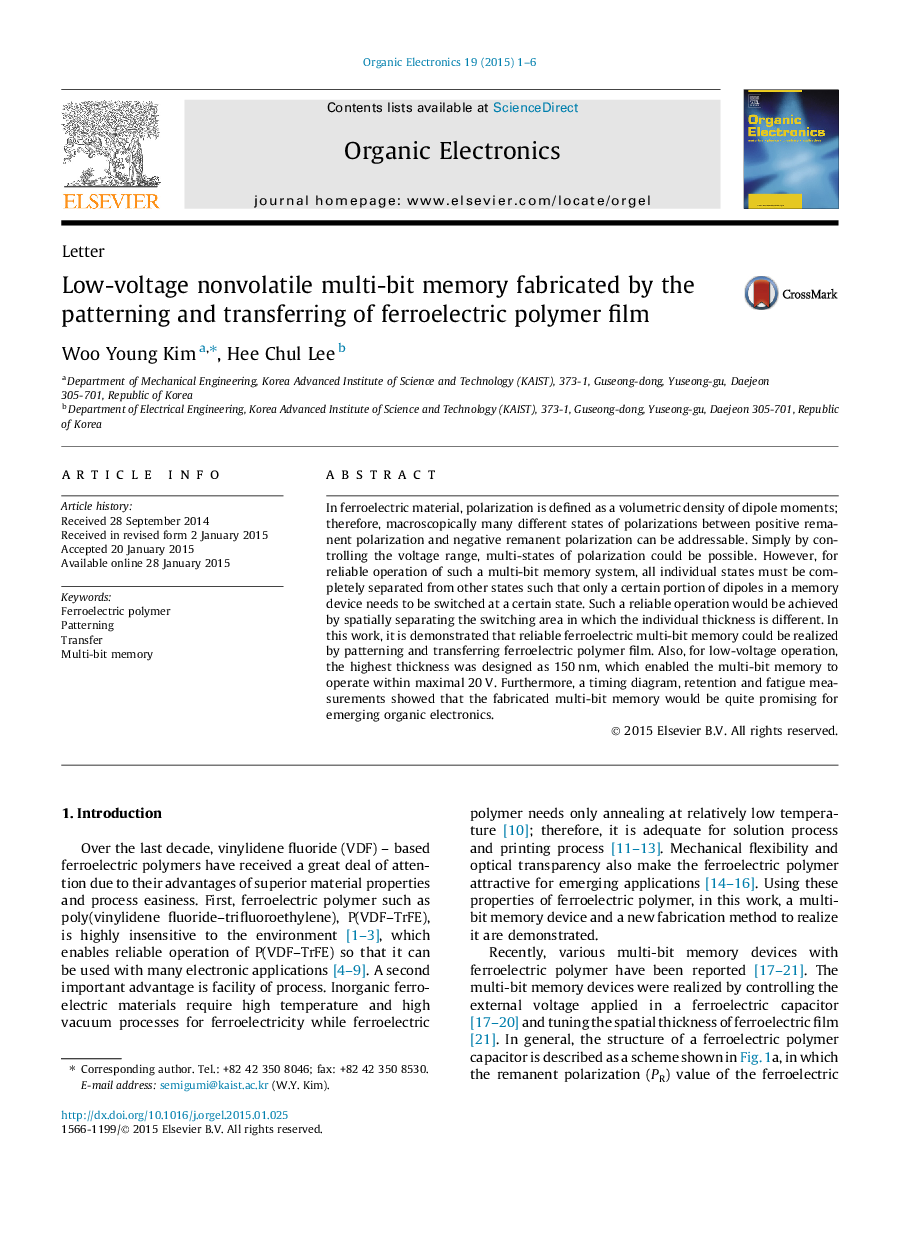| Article ID | Journal | Published Year | Pages | File Type |
|---|---|---|---|---|
| 1266934 | Organic Electronics | 2015 | 6 Pages |
•This paper shows a ferroelectric multi-bit memory with two different thicknesses.•Pattering and transferring of ferroelectric film were used to realize the memory.•Electrical characteristics were tuned by area ratio of two different capacitors.•Timing diagram, retention and fatigue tests exhibit the suggested device is reliable.
In ferroelectric material, polarization is defined as a volumetric density of dipole moments; therefore, macroscopically many different states of polarizations between positive remanent polarization and negative remanent polarization can be addressable. Simply by controlling the voltage range, multi-states of polarization could be possible. However, for reliable operation of such a multi-bit memory system, all individual states must be completely separated from other states such that only a certain portion of dipoles in a memory device needs to be switched at a certain state. Such a reliable operation would be achieved by spatially separating the switching area in which the individual thickness is different. In this work, it is demonstrated that reliable ferroelectric multi-bit memory could be realized by patterning and transferring ferroelectric polymer film. Also, for low-voltage operation, the highest thickness was designed as 150 nm, which enabled the multi-bit memory to operate within maximal 20 V. Furthermore, a timing diagram, retention and fatigue measurements showed that the fabricated multi-bit memory would be quite promising for emerging organic electronics.
Graphical abstractFigure optionsDownload full-size imageDownload as PowerPoint slide
